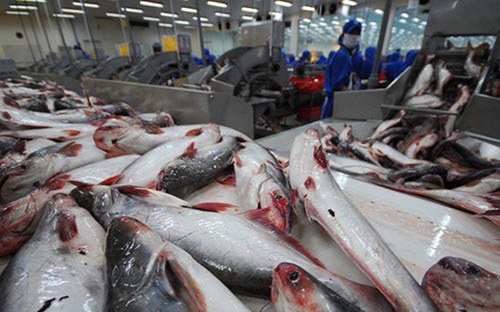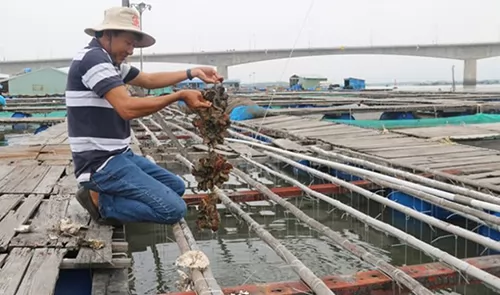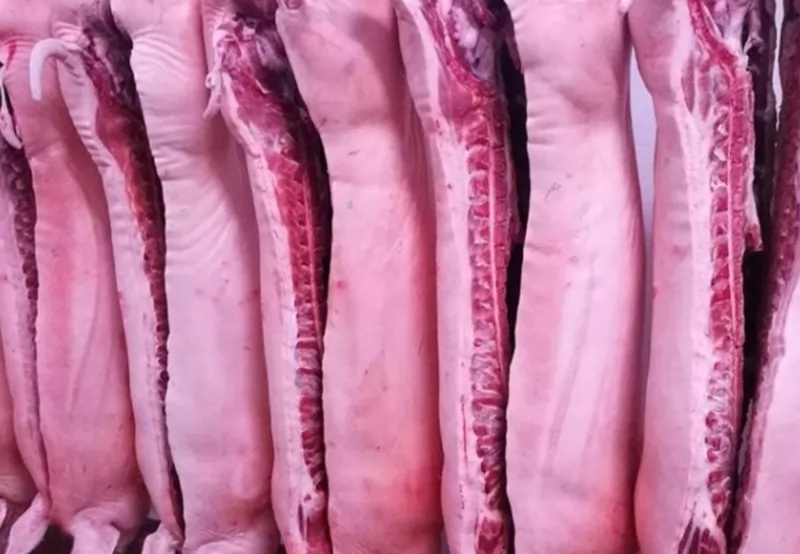VN could face tra fish oversupply

Việt Nam’s tra fish farmers could face oversupply problems this year due to rampant production. - Photo cafef.vn
Viet Nam News / HÀ NỘI — The tra fish export sector was probably the most improved industry this year, but rampant production could lead to excess supplies and price drops, according to Việt Dragon Securities Company (VDSC).
Many farmers have rushed to breed tra fish after prices increased steadily from the beginning of 2017 due to fingerling and raw materials shortages.
The situation may lead to oversupply of raw materials when farms step into the harvest season. The selling price of raw fish for factories could be reduced, the company said.
Farms could suffer great losses and stop breeding tra for the next season, meaning they would lack raw materials for the next crop, VDSC warned.
However, according to the firm, if the US-China trade war continues, Việt Nam could increase its market share in the US, replacing Chinese tilapia that currently accounts for 40 per cent of all fish imports to the US.
Barriers to Vietnamese tra fish in the US market are likely to decrease. Việt Nam has passed the US Department of Agriculture (USDA) field tests – the most important step in the assessment process established by the USADA’s Food Safety and Inspection Service (FSIS).
In addition, the preliminary anti-dumping tax on basa fish during the 14th administrative review period (POR 14) is significantly lower than that of POR 13. As a result, VDSC expects the tra fish export volume to the US market to increase sharply this year.
The Việt Nam-EU Free Trade Agreement (EVFTA) may be approved early this year. If EVFTA is approved, the import tariff for frozen tra fish fillets will be reduced from the current rate of 5.5 per cent to zero within three years. The rate for processed tra fillets will be reduced from 7 per cent to zero within seven years. VDSC said demand for tra fish in the EU is expected to rise.
With the popularity of processed products in the US and EU markets, Việt Nam has the potential to increase its profits from high-value products. The gross margin for the products is 22-25 per cent, higher than the margin of 12-16 per cent for frozen fillets.
The world population will exceed 8.5 billion people by 2030. As the natural fish supply worldwide is dwindling, the market share of farmed fish is expected to increase from 47 per cent in 2016 to 54 per cent in 2030. According to VDSC, this change presents a chance for tra producers like Vĩnh Hoàn to expand production.
Việt Nam’s Mekong Delta region has favourable ecological conditions for large-scale tra farming. The natural conditions combined with advanced farming technology will produce white-meat tra products, a favourite choice of consumers. Other major tra producers such as India, Bangladesh, Thailand and Indonesia produce low-value yellow-meat tra fish.
Việt Nam’s export value of the fish was estimated at US$2.3 billion for 2018, higher than the $1.8 billion recorded in 2017, according to the Việt Nam Association of Seafood Exporters and Producers. — VNS
Maybe you are interested

A place that supplies 10 million aquatic breeds every year
Hai Phong is a coastal city with many potentials and advantages in developing the fisheries economy, so aquatic breed production is of interest.

Bà Rịa – Vũng Tàu farmers breed Pacific oysters
Many farmers in the southern province of Bà Rịa – Vũng Tàu are breeding Pacific oysters since they have a high survival rate and steady demand in the market.

Germany slaughters 7% fewer pigs in 2023
43.8 million pigs were slaughtered in Germany last year. This is 3.3 million or 7% less than in 2022, according to the latest figures of the German Federal Statistical Office (Destatis).





